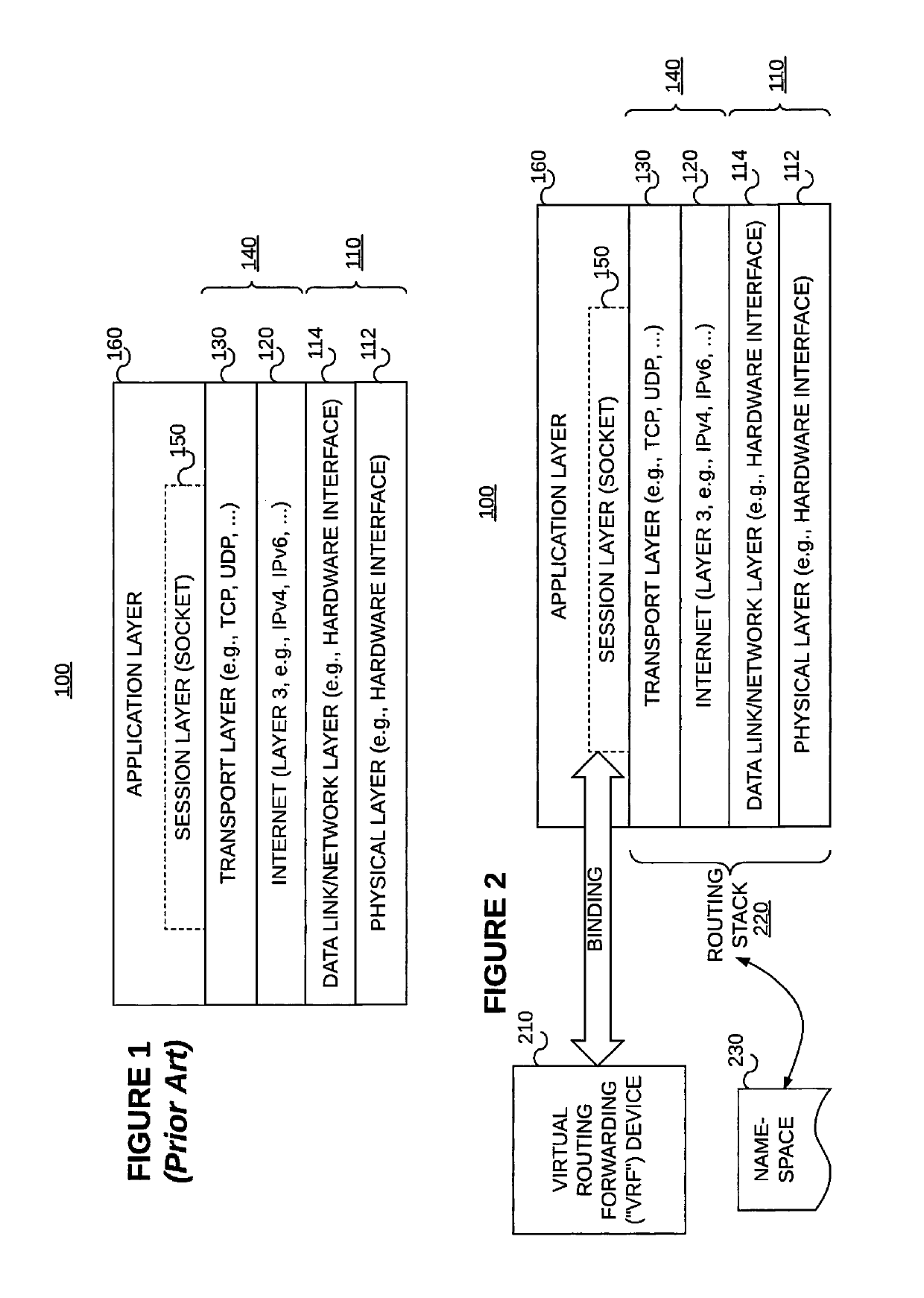Packet processing in a routing instance that is distributed across at least two different routing stacks
a packet processing and routing instance technology, applied in the field of network communication, can solve the problems of limiting access to the device, limiting the potential for problems, and information in the namespace a b>360/b> will likely be incompatible with information in the namespa
- Summary
- Abstract
- Description
- Claims
- Application Information
AI Technical Summary
Benefits of technology
Problems solved by technology
Method used
Image
Examples
Embodiment Construction
§ 4.1 Example Methods
[0035]Example embodiments consistent with the present invention may be implemented on a data forwarding device such as the one described above reference to FIG. 3. That is, the data forwarding device may include (1) a first routing stack 330 associated with a first namespace 360 and a first (e.g., in-band data plane) interface 340, (2) a second routing stack 370 associated with a second namespace 390 and a second (e.g., out-of-band control plane) interface 380, wherein at least some forwarding information included in the second namespace 390 is incompatible with the first routing stack 330, (3) a VRF device or instance 395, and (4) a shared session layer socket 350 associated with the first routing stack 330 and the second routing stack 370 and bound to the VRF instance 395, wherein the VRF 395 is associated with the second (e.g., out-of-band control plane) interface 380 via the second routing stack 370. Some interfaces (e.g., in-band interfaces 340) are managed...
PUM
 Login to View More
Login to View More Abstract
Description
Claims
Application Information
 Login to View More
Login to View More - R&D
- Intellectual Property
- Life Sciences
- Materials
- Tech Scout
- Unparalleled Data Quality
- Higher Quality Content
- 60% Fewer Hallucinations
Browse by: Latest US Patents, China's latest patents, Technical Efficacy Thesaurus, Application Domain, Technology Topic, Popular Technical Reports.
© 2025 PatSnap. All rights reserved.Legal|Privacy policy|Modern Slavery Act Transparency Statement|Sitemap|About US| Contact US: help@patsnap.com



